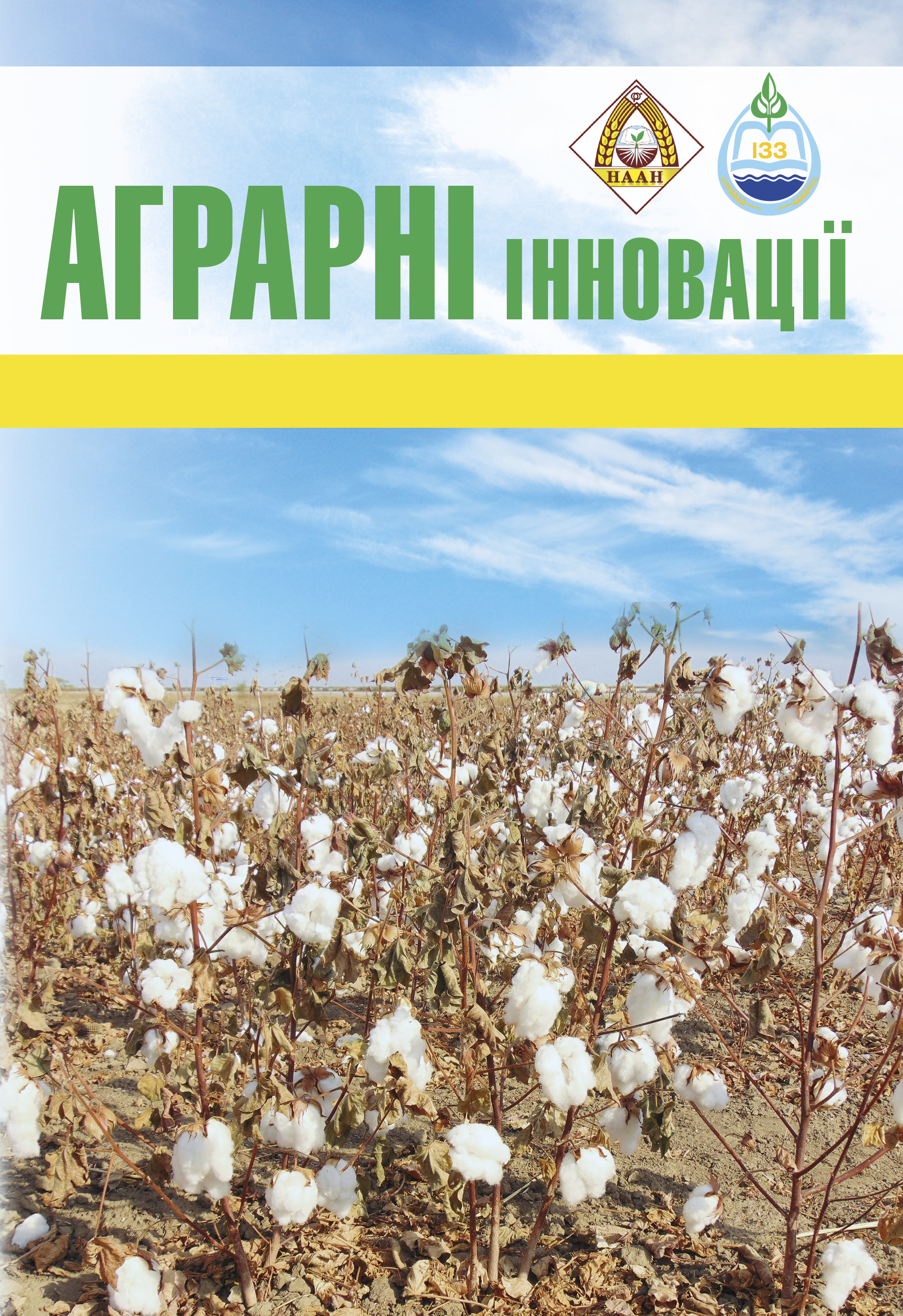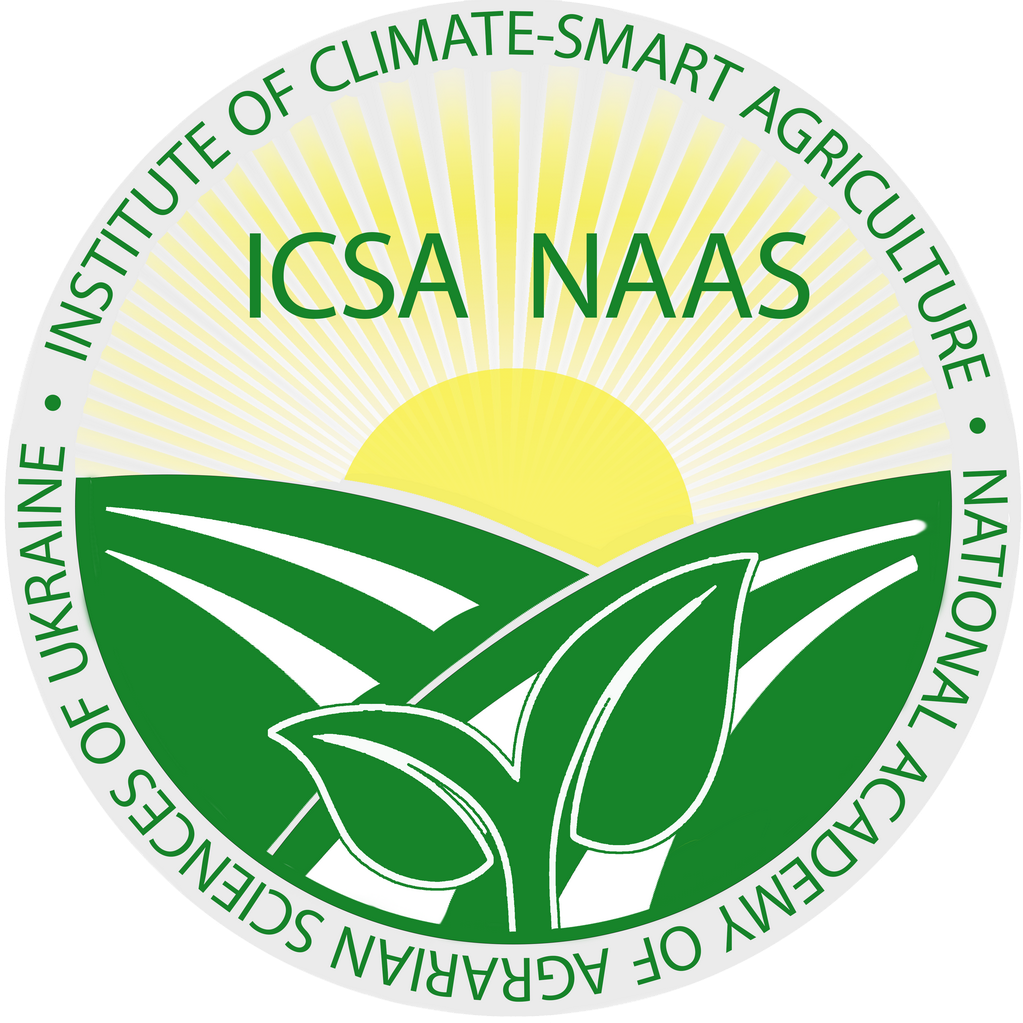Biochemical Profile of the Grain and Vegetative Mass of Common Bean
Abstract
Objective. To determine and analyze the biochem- ical components of the plant and grain of common bean (Phaseolus vulgaris L.). Methods. Physiological- biochemical, analytical, comparative, and statistical meth- ods were used. The content and quantity of phytochemical substances were determined using extraction techniques, thin-layer chromatography (TLC), paper chromatogra- phy (PC), and high-performance liquid chromatography (HPLC).Results.The main phytochemical components and their quantitative content were identified in the biomass and grain samples of common bean. The lowest flavonoid content was detected in the leaves. The shoots showed the highest content of total phenolics – 200 mg/g and fla- vonoids – 150 mg/g, compared to the grain, where these components were found in quantities of 140–145 mg/g and 10–50 mg/g of dry matter, respectively. The phytic acid content in the grain ranged from 4.09 to 9.96 mg/g.The amount of saponins in the grain was only 0.6% mg/g.Tannin content in the grain ranged from 0.77 to 0.97 mg/g.Among the macronutrients, carbohydrates and starch had the highest values – 54–60% and 34–45%, respectively.In the vegetative mass of bush-type bean varieties, the highest concentrations of micronutrients were recorded for iron – 100–300 mg/kg of dry matter, zinc – 20–50 mg/ kg, copper and boron – 5–15 mg/kg and 20–50 mg/kg, respectively. The total content of soluble sugars (sucrose, glucose, fructose) in the biomass ranged from approxi- mately 5–15%.Conclusions.The results obtained demonstrate significant quantita- tive differences in the profile of phenolic components and other nutrients between the grain and biomass of common bean. Phytochemical components are species-specific and discriminative, making the crop valuable both for human consumption and as a nitrogen source in agricultural agro- cenoses.
References
2. Arumugam, R., Rajasekaran, S. & Nagarajan, S. M. Response of Arbuscular Mycorrhizal Fungi and Rhizobium Inoculation on Growth and Chlorophyll Content of Vigna unguiculata (L) Walp Var. Pusa 151. Journal of Applied Sciences and Environmental Management. 2010.14: 113-115. DOI:10.4314/jasem.v14i4.63282
3. Сторожик Л.І., Терещенко І.С. Фенольні сполуки сорго [Sorghum bicolor (L.) Moench] та їх алелопатична дія. Новітні агротехнології. 2023, Т. 11, № 2. http://jna.bio.gov.ua/issue/view/16933
4. Aslani, M., Souri, M. K. Growth and Quality of Green Bean (Phaseolus vulgaris L.) under Foliar Application of Organic Chelate Fertilizers. Open Agriculture. 2018.3: 146–154. DOI:10.1515/opag-2018-0015
5. Balisteiro, D. M., Rombaldi, C. & Genovese, M. I. Protein, Isoflavones, Trypsin Inhibitory and in Vitro Antioxidant Capacities: Comparison among Conventionally and Organically Grown Soybeans. Food Research International. 2013. 51: 8-14. DOI:10.1016/j.foodres.
6. Hussain, M.I., Reigosa, M.J. Evaluation of herbicide potential of sesquiterpene lactone and flavonoid: Impact on germination, seedling growth indices and root length in Arabidopsis thaliana. Pakistan Journal of Botany.2014, 46, 995–1000.
7. Hussain, M.I., Reigosa, M.J. Seedling growth, leaf water status and signature of stable carbon isotopes in C3 perennials exposed to natural phytochemicals. Australian Journal of Botany. 201260(8):676-684. DOI:10.1071/BT12072.
8. Макаренко О. А., Левицький А. П. Фізіологічні функції флавоноїдів в рослинах. Фізіологія і біохімія культурних рослин. 2013. Т. 45, № 2. С. 100–112.
9. Nekonam M. S., Razmjoo J., & Kraimmojeni H. Assessment of some medicinal plants for their allelopathic potential against redroot pigweed (Amaranthus retroflexus). Journal of Plant Pro-tection Research. 2014. Vol. 54, Iss. 1. P. 90–95. doi: 10.2478/jppr-2014-00148.
10. Shah S. H., Khan E. A., & Shah H. Allelopathic sorghumwater extract helps to improve yield of sunflower (Helianthus annuus L.). Pakistan Journal of Botany. 2016. Vol. 48, I ss. 3.P. 1197–1202
11. 11.Głąb L., Sowiński J., Bough R., & Dayan F. E. Allelopathic potential of sorghum (Sorghum bicolor (L.) Moench) in weed control: a comprehensive review. Advances in Agronomy. 2017. Vol. 145. P. 43–95. doi: 10.1016/bs.agron.2017.05.001
12. Aslani, M., Souri, M. K.. Growth and Quality of Green Bean (Phaseolus vulgaris L.) under Foliar Application of Organic Chelate Fertilizers. Open Agriculture. 2018. 3: 146–154. DOI:10.1515/opag-2018-0015
13. Celmeli, T., Sari, H., Canci, H., Sari, D., Adak, A., Eker, T. & Toker, C. 20118. The Nutritional Content of Common Bean (Phaseolus vulgaris L.) Landraces in Comparison to Modern Varieties. Agronomy. 2018. 8(9):166. DOI:10.3390/agronomy8090166
14. Naiji, M., Souri, M. K. Nutritional Value and Mineral Concentrations of Sweet Basil under Organic Compared to Chemical Fertilization, Acta Scientiarum Polonorum Hortorum Cultus., 2018. 17: 167– 175. DOI:10.24326/asphc.2018.2.14
15. Vanden Langenberg, K. M., Bethke, P. C. & Nienhuis, J. Patterns of Fructose, Glucose, and Sucrose Accumulation in Snap and Dry Bean (Phaseolus vulgaris L.) Pods. Hort Science. 2012.47(7):874-878. DOI:10.21273/HORTSCI.47.7.874
16. Cirdar, K. S., Yang, T. P., Berry, R. J. & Bailey, L. B. Folate and DNA Methylation: A Review of Molecular Mechanisms and the Evidence for Folate’s Role. Advances in Nutrition. 2012. 3(1):21-38 DOI:10.3945/an.111.000992
17. Методика дослідної справи в овочівництві і баштанництві / за ред. Г. Л. Бондаренка, К. І. Яковенка. 3-тє вид., пер. і доп. Харків: Основа, 2001. 369 с.
18. Демешко О. В., Комiсаренко А. М. Динамiка нако- пичення суми полiфенольних речовин у листi акацiї бiлої. Фiтотерапiя. Часопис. 2005. № 4. С. 63–65.
19. Державна Фармакопея України. (1-е вид., 2-гедоп.). Харків: РIРЕГ, 2008. 620 с

This work is licensed under a Creative Commons Attribution 4.0 International License.






